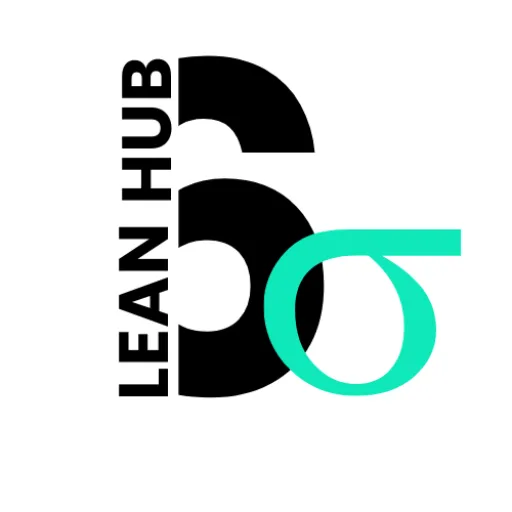Streamlining Production with Lean Manufacturing
Lean manufacturing is a philosophy that seeks to enhance efficiency by minimizing waste while maximizing productivity. Originating from the Toyota Production System, lean principles focus on delivering value to customers through streamlined processes. At its core, lean manufacturing emphasizes the importance of understanding what constitutes value from the customer’s perspective.
This understanding drives organizations to eliminate any activities that do not add value, thereby optimizing the overall production process. The principles of lean manufacturing can be distilled into several key tenets, including value identification, value stream mapping, flow creation, pull systems, and striving for perfection. By identifying value, organizations can better align their processes with customer needs.
Value stream mapping allows teams to visualize the flow of materials and information, identifying bottlenecks and inefficiencies. Creating flow involves ensuring that production processes run smoothly without interruptions, while pull systems ensure that production is based on actual demand rather than forecasts. The pursuit of perfection is an ongoing journey, encouraging organizations to continuously seek improvements in every aspect of their operations.
Key Takeaways
- Lean manufacturing principles focus on maximizing value and minimizing waste in production processes.
- Identifying and eliminating waste in production processes is crucial for improving efficiency and reducing costs.
- Just-in-Time (JIT) production aims to minimize inventory and reduce lead times, allowing for more responsive and efficient production.
- Kanban systems help manage inventory levels by signaling when to produce and replenish items, reducing excess inventory and waste.
- Creating a culture of continuous improvement is essential for sustaining lean practices and driving ongoing efficiency gains.
Identifying Waste in Production Processes
Waste in production processes can take many forms, often categorized into seven types: overproduction, waiting, transport, extra processing, inventory, motion, and defects. Overproduction occurs when items are produced before they are needed, leading to excess inventory and increased holding costs. Waiting refers to idle time when resources are not being utilized effectively, such as workers waiting for materials or equipment.
Transport waste involves unnecessary movement of products or materials between locations, which can lead to delays and increased costs. Extra processing waste arises when more work is done than necessary to meet customer requirements. This could include excessive features in a product that do not add value from the customer’s perspective.
Inventory waste is tied to holding too much stock, which can tie up capital and increase storage costs. Motion waste refers to unnecessary movements by employees that do not contribute to the production process, such as walking long distances to retrieve tools or materials. Finally, defects represent errors in production that require rework or scrap, leading to wasted resources and time.
Identifying these types of waste is crucial for organizations aiming to implement lean principles effectively.
Implementing Just-in-Time (JIT) Production
Just-in-Time (JIT) production is a key component of lean manufacturing that focuses on producing only what is needed when it is needed. This approach minimizes inventory levels and reduces waste associated with overproduction. JIT requires a deep understanding of customer demand and a highly responsive supply chain capable of delivering materials and components precisely when required.
By synchronizing production schedules with customer orders, organizations can significantly reduce lead times and improve overall efficiency. Implementing JIT production involves several critical steps. First, organizations must establish strong relationships with suppliers to ensure timely delivery of materials.
This often includes negotiating contracts that allow for flexible order quantities and delivery schedules. Additionally, companies may need to invest in technology that enables real-time tracking of inventory levels and production processes. Training employees on JIT principles is also essential; they must understand the importance of maintaining minimal inventory and be empowered to make decisions that support this goal.
By fostering a culture that embraces JIT practices, organizations can achieve greater agility and responsiveness in their operations.
Utilizing Kanban Systems for Inventory Management
| Metrics | Value |
|---|---|
| Lead Time | 10 days |
| Inventory Turnover | 6 times/year |
| Stockout Rate | 2% |
| Waste Reduction | 15% |
Kanban systems are a visual tool used in lean manufacturing to manage inventory and workflow effectively. Originating from Toyota’s production system, Kanban utilizes cards or signals to indicate when new materials should be ordered or when production should be initiated. This system helps prevent overproduction and ensures that inventory levels are maintained at optimal levels based on actual demand.
The implementation of a Kanban system involves several key components. First, organizations must define the workflow stages and establish clear visual signals for each stage. For example, a Kanban board may display columns representing different stages of production, with cards moving through these columns as work progresses.
Each card typically contains information about the task at hand, including details about the product, quantity needed, and due dates.
This visual representation allows teams to quickly assess the status of production and identify any bottlenecks or delays. Moreover, Kanban systems promote collaboration among team members by providing transparency into the workflow process.
Employees can easily see what tasks are pending, in progress, or completed, fostering accountability and encouraging proactive problem-solving. By utilizing Kanban for inventory management, organizations can enhance their ability to respond to changes in demand while minimizing waste associated with excess inventory.
Creating a Culture of Continuous Improvement
A culture of continuous improvement is fundamental to the success of lean manufacturing initiatives. This culture encourages employees at all levels to identify opportunities for improvement and actively participate in problem-solving efforts. By fostering an environment where feedback is valued and innovation is encouraged, organizations can drive significant enhancements in efficiency and quality.
To create a culture of continuous improvement, leadership must demonstrate a commitment to these principles by modeling desired behaviors and providing resources for training and development. Regular training sessions on lean methodologies can empower employees with the knowledge and skills needed to identify inefficiencies and propose solutions. Additionally, organizations can implement structured improvement programs such as Kaizen events, where cross-functional teams come together to address specific challenges and develop actionable plans for improvement.
Recognition plays a crucial role in reinforcing a culture of continuous improvement. Celebrating successes—whether large or small—can motivate employees to remain engaged in improvement efforts. Organizations may establish reward systems that recognize individuals or teams who contribute innovative ideas or successfully implement improvements.
By embedding continuous improvement into the organizational culture, companies can ensure that they remain agile and responsive to changing market conditions.
Standardizing Work Processes
Standardizing work processes is essential for achieving consistency and efficiency in production environments.
By establishing clear procedures for tasks and operations, organizations can minimize variability and ensure that every employee performs their duties in a uniform manner.
Standardization not only enhances quality but also simplifies training for new employees, as they have a clear framework to follow.
The process of standardization begins with documenting existing workflows and identifying best practices. This documentation should include step-by-step instructions for each task, along with any necessary tools or materials required for completion. Once standardized procedures are established, organizations should regularly review and update them based on feedback from employees and changes in technology or processes.
Moreover, standardization should not be viewed as a static process; it must evolve as improvements are identified through continuous feedback loops. Employees should be encouraged to suggest modifications to standardized processes based on their experiences on the shop floor. This dynamic approach ensures that standardization remains relevant and effective while promoting employee engagement in the improvement process.
Implementing 5S Methodology for Workplace Organization
The 5S methodology is a systematic approach to workplace organization that enhances efficiency by creating a clean and organized environment. The five pillars of 5S—Sort, Set in order, Shine, Standardize, and Sustain—provide a framework for improving workplace organization and productivity. Each pillar plays a critical role in establishing an environment conducive to lean manufacturing principles.
The first step, Sort (Seiri), involves identifying necessary items in the workplace and removing anything that is not essential. This decluttering process helps reduce distractions and creates more space for productive activities. The second step, Set in order (Seiton), focuses on organizing tools and materials so that they are easily accessible when needed.
This may involve labeling storage areas or implementing designated locations for frequently used items. Shine (Seiso) emphasizes cleanliness in the workplace; regular cleaning routines help maintain an organized environment while also allowing employees to identify potential issues such as equipment malfunctions or safety hazards early on. The fourth step, Standardize (Seiketsu), involves creating standardized procedures for maintaining organization and cleanliness across the workplace.
Finally, Sustain (Shitsuke) focuses on instilling discipline among employees to adhere to established standards consistently over time. Implementing 5S not only improves workplace organization but also fosters a sense of ownership among employees regarding their work environment. When individuals take pride in maintaining a clean and organized workspace, it contributes positively to overall morale and productivity.
Using Value Stream Mapping to Identify Opportunities for Improvement
Value stream mapping (VSM) is a powerful tool used in lean manufacturing to visualize the flow of materials and information throughout the production process. By mapping out each step involved in delivering a product or service—from raw material acquisition through production to delivery—organizations can identify inefficiencies and areas for improvement more effectively. The process begins with selecting a specific product or service line to analyze.
Teams then create a current state map that outlines each step in the value stream along with relevant metrics such as cycle times, lead times, and inventory levels at each stage. This visual representation allows teams to pinpoint bottlenecks or delays that hinder overall efficiency. Once the current state map is established, teams can engage in brainstorming sessions to develop a future state map that incorporates improvements aimed at eliminating waste identified during the analysis phase.
This may involve reconfiguring workflows, reducing handoffs between departments, or implementing new technologies that streamline processes. Value stream mapping not only highlights opportunities for improvement but also serves as a communication tool among team members across different functions within an organization. By fostering collaboration around VSM initiatives, companies can create alignment toward common goals while driving continuous improvement efforts throughout their operations.
FAQs
What is lean manufacturing?
Lean manufacturing is a production practice that focuses on maximizing value for the customer while minimizing waste. It aims to create more value with fewer resources by eliminating non-value added activities and streamlining processes.
What are the key principles of lean manufacturing?
The key principles of lean manufacturing include identifying value from the customer’s perspective, mapping the value stream to eliminate waste, creating flow by eliminating interruptions and delays, and continuously striving for perfection through continuous improvement.
What are the benefits of implementing lean manufacturing?
Some of the benefits of implementing lean manufacturing include improved quality, reduced lead times, increased productivity, lower costs, improved employee morale, and enhanced customer satisfaction.
What are some common tools and techniques used in lean manufacturing?
Common tools and techniques used in lean manufacturing include 5S (Sort, Set in order, Shine, Standardize, Sustain), Kanban, value stream mapping, Kaizen (continuous improvement), and Just-in-Time production.
Is lean manufacturing only applicable to the manufacturing industry?
No, lean principles can be applied to various industries including healthcare, service, construction, and software development. The focus is on eliminating waste and creating value, which can be applied to any process or industry.






